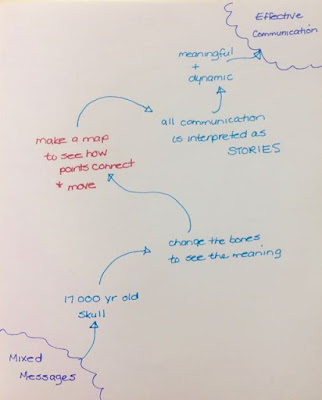Trusting the silence in conversation

Silence doesn't sound scary while you're looking at a photo of a path through the woods. Primed by this photo, you are likely to imagine silence as calming or peaceful. In the middle of an important conversation, this may not be your first reaction to silence. Most often, when we say something significant and get silence in reply, we are rattled. Silence is not processed as calming; it's processed as a warning. The quieter it is outside, the more alarms go off in our brains. "Danger!" Is silence always a bad sign? Probably not. Think of a time when someone said something and your reaction was "I need to process this." The time when you were processing was best spent in silence (processing out loud is not always a good idea, even for extraverts). This processing time could have been used to do many things: to understand; to tease out an association at the edge of your awareness; to think several jumps ahead; or to disagree. Disagreement...


